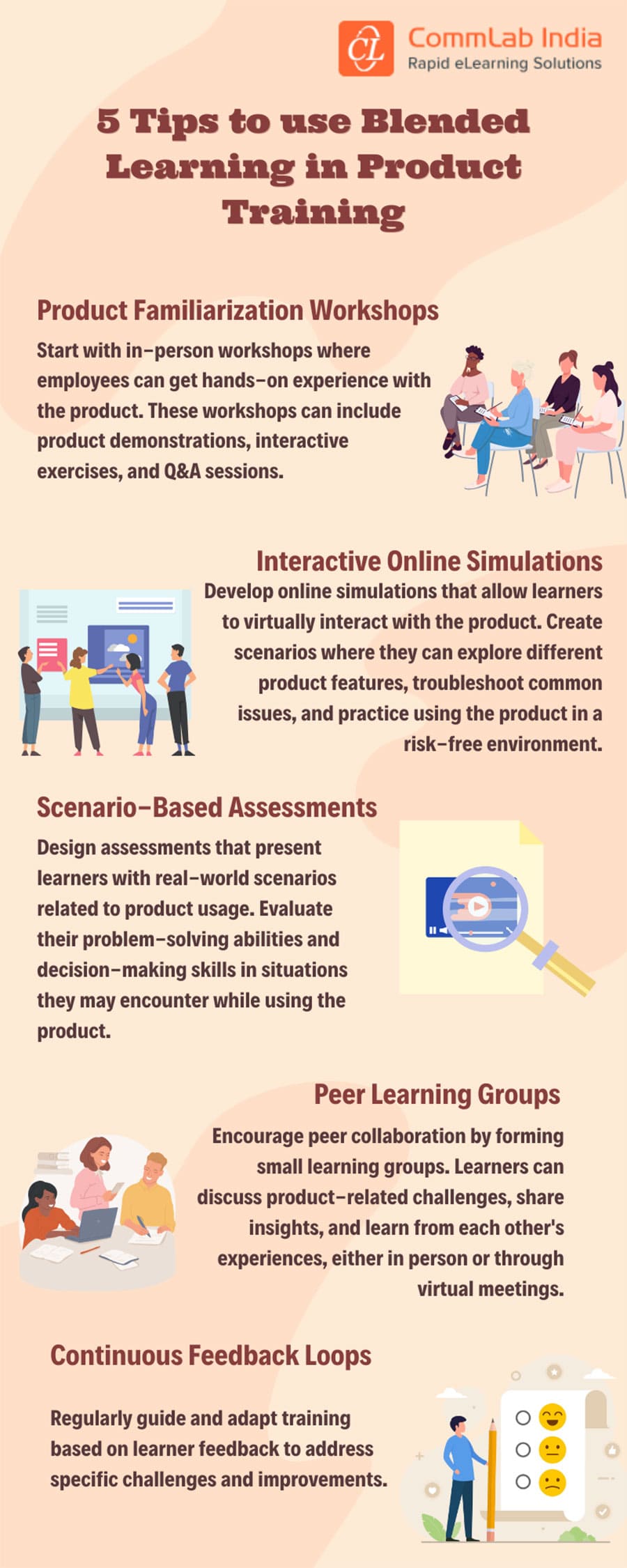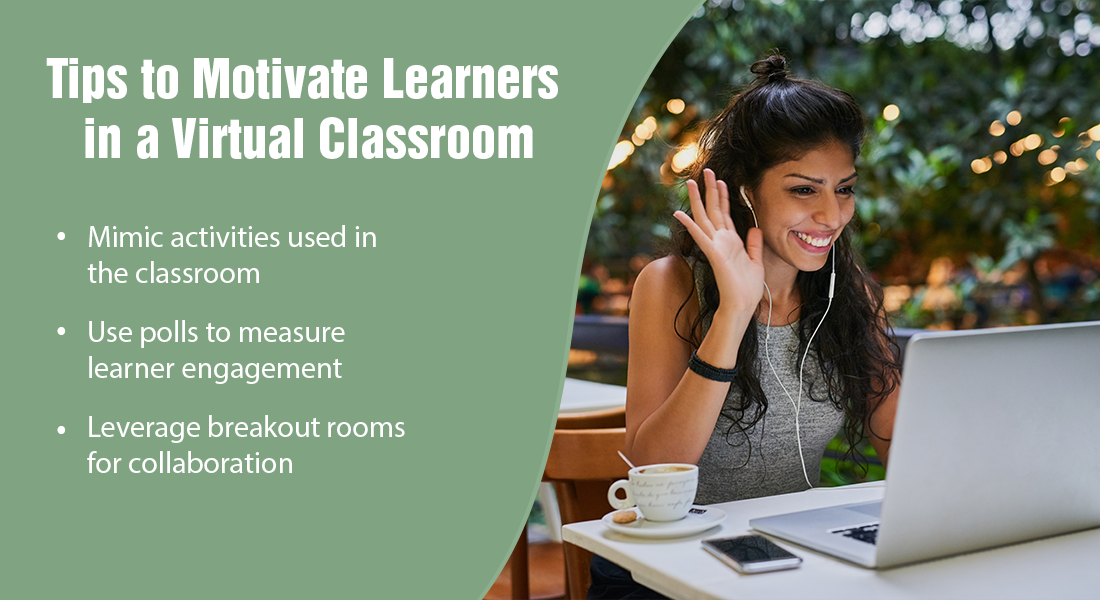5 Tips to use Blended Learning in Product Training [Infographic]
![5 Tips to use Blended Learning in Product Training [Infographic] 5 Tips to use Blended Learning in Product Training [Infographic]](https://blog.commlabindia.com/hubfs/blogs/blended-learning-for-product-training-infographic.jpg)
What is Blended Learning?
Blended learning, also known as hybrid learning or mixed-mode learning, is an employee training that combines traditional face-to-face instruction with online or digital methods. It integrates the best aspects of both traditional classroom teaching and online learning to create a more effective and efficient training experience.
When used for product training, it offers employees a versatile learning experience. It includes interactive activities, simulations, video-based learning activities, and custom eLearning modules, enabling personalized, flexible learning through various mediums.
Using Blended Learning for Product Training Helps Ensure Your Employees are Well-Equipped to Sell and Promote Your Products Effectively.
It offers:
- Flexibility
- Cost-effectiveness
- Personalized learning
(Read on to know more...)
Benefits of Using Blended Learning for Product Training
1. Flexibility and Convenience: Blended learning offers flexibility by enabling employees to access training materials anytime, anywhere. Self-paced online modules eliminate the need for rigid schedules, making it easy for busy employees to fit training into their workday.
2. Cost-Effective: Save on training costs with online resources. Reduce expenses like travel, venue rental, printed materials, and instructor fees. Employees can access content remotely, eliminating the need for costly equipment or software.
3. Personalized Learning: Cater to diverse learning styles with a variety of materials—videos, written content, quizzes, and simulations. Provide a personalized learning experience tailored to each trainee's needs.
4. Increased Engagement: Blend online convenience with face-to-face interaction. Engage trainees with multimedia online modules, gamification, and encourage questions, discussions, and collaboration during in-person sessions.
5. Better Retention: Blended learning enhances knowledge retention. Combining various learning methods ensures information sticks. For instance, online simulations followed by in-person discussions reinforce product knowledge.
6. Real-life Application: Take a practical approach. Use online simulations or virtual labs for hands-on practice in a safe environment. Trainees gain confidence and readiness for on-the-job product handling.
7. Tracking Progress: Utilize online training platforms' tracking tools to monitor trainee progress. Gain insights into strengths and areas needing improvement. Based on these learning analytics, tailor the training program to meet specific employee needs.
→ Must-Go-Through Infographic Before Delving into Blended Learning [Infographic]
Now that you know the advantages, let us now discuss a few tips to make blended learning for product training more effective:
Wrapping Up
Blended learning, as discussed in this article, combines the best elements of traditional face-to-face instruction with the flexibility and convenience of online learning. It offers a unique approach to product training that can greatly benefit both employees and organizations.
Ready to elevate your training with blended learning but want to know more about it before you delve into it? Dive into our infographic now!




![Blended Learning — The Go-to Approach to Offer Personalized Learning [Infographic]](https://no-cache.hubspot.com/cta/default/59327/9bb7d8b9-d06c-4136-8185-3d5050234224.png)

![How to Design Impactful eLearning? Unveil the Secrets [Comprehensive Guide]](https://blog.commlabindia.com/hubfs/blogs/elearning-impactful-design-aspects-info.jpg)
